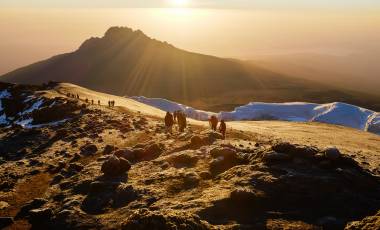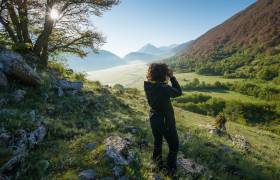As the first of the sun’s rays crept over the East African horizon to warm my freezing back and illuminate the rocky moonscape beneath my feet, I knew I was going to get there.
I was wearier than I’d ever felt and shivering, despite my six layers of clothes, but the worst was over; there was nothing on earth that could make me turn back now as I almost completed my walk to the Roof of Africa: Kilimanjaro.
Trekking Kilimanjaro – The Lemosho Route
It is said that to climb Kilimanjaro is to walk from the equator to the Arctic in terms of the climate zones passed through, and in tackling the Lemosho Route this observation was proved absolutely correct.
The climb began as a winding muddy trail through lush, humid rainforest, the hum of the insects interrupted only by the rustle and hoot of the Colobus monkeys which would occasionally pass.
Shira Plateau
By the second day, the dense forest gave way to the rocky expanse of the majestic Shira Plateau. Formed by a prehistoric eruption, it is a dusty scrubland sparsely covered with giant heather plants, culminating in the mountain itself in the distance.
From our camp at the edge of the plateau, we were treated to our first unimpeded view of the mountain, the scale of the challenge revealing itself as I strained through binoculars for a glimpse of the wild peak.
The following day was spent crossing the plateau, via the Shira Cathedral, to the slopes of the mountain. The only vegetation from this point onwards was the alien-looking trees smattered across the jagged slopes, and the only wildlife were the crows circling menacingly above.
The Lava Tower
From Shira II, we trekked around the mountain’s face on the lava ridges of the Western Breach, the panoramic views of the plains below swirling in the morning mist. The highest point of the day’s walk is the phenomenal Lava Tower.
Kilimanjaro was originally three distinct volcanoes, and the Lava Tower is the remnants of one of their cores. Over time, the core cooled to form solid rock, and the outer craters slowly fell away to leave the huge black pillar. Needless to say, it is an impressive, ancient sight.
The base of the tower was the first occasion we passed over 4000m of altitude, and the final steps of the steep ascent, coupled with a laughing fit bought on by a guide’s demonstration on how to dance in the nightclubs of Arusha without being relieved of your wallet, had me reaching for the paracetamol.
Barranco Valley
The afternoon was spent descending into the great Barranco Valley. Our camp for the night was at the foot of the Barranco Wall, a 300m near vertical scramble, which took the best part of the following morning to scale.
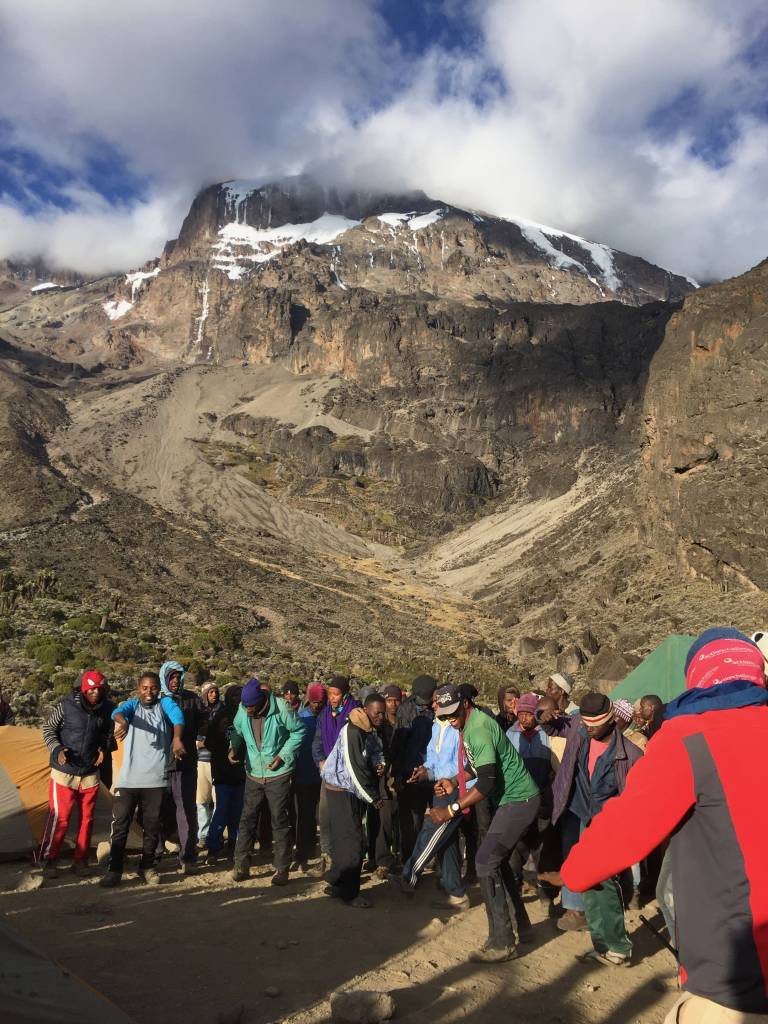 Dance practice
Dance practice
It was with the wall looming above us that one of the true highlights of the trip unfolded. Away from the bustle of the campsite, dozens of porters gathered in the glow of the setting sun to sing traditional songs of the mountain. It was unprompted and unarranged, a guttural, tribal call and response that created a carnivalesque atmosphere.
All hikers in attendance found the energy to clap and dance along in the cool evening air, enjoying the feeling of togetherness among strangers with a shared ambition.
The summit aside, scaling the Barranco Wall is one of the most challenging aspects of the hike. Whilst not a technical climb, it is a steep scramble up 300m of harsh rockface with the valley yawning beneath. Its reputation precedes it, and after four days of trekking, it is certainly tough on the limbs.
Concentration is key, with any slip likely to result in a long fall with no hope of a soft landing, but all efforts are quickly shown up as porters begin to overtake, precariously balancing their loads on their heads whilst channelling the mountain-goat spirit and nonchalantly cantering up.
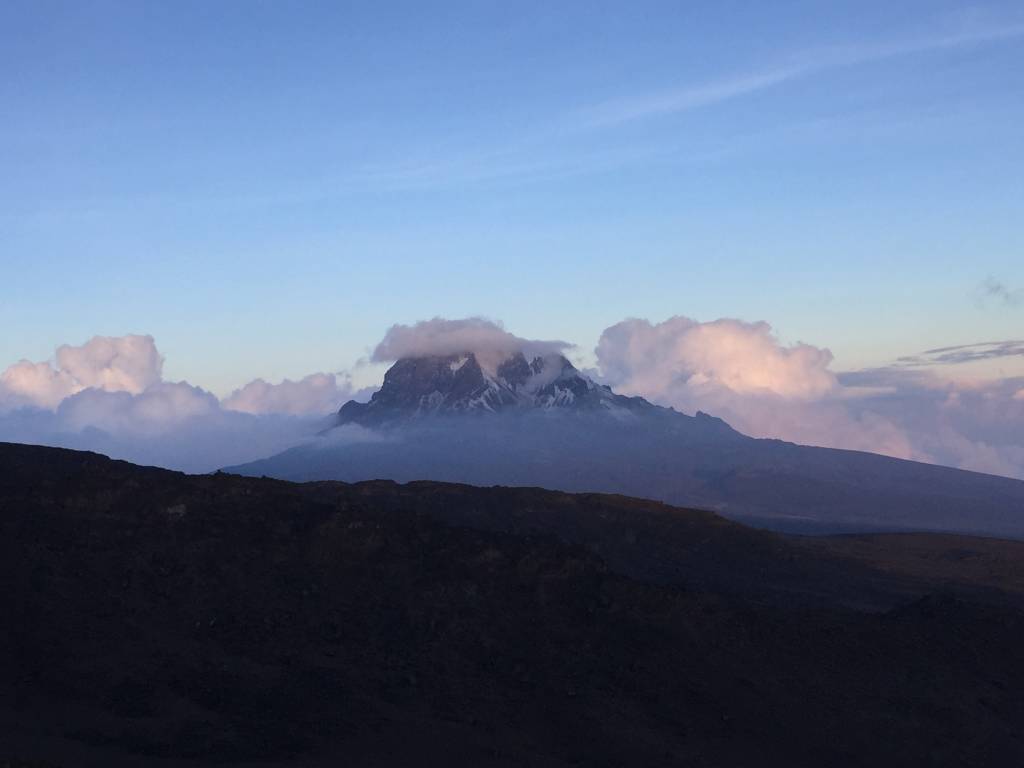 Peeking through the clouds
Peeking through the clouds
Karanga Campsite
Safely over the wall, it was an undulating path over the rugged volcanic scree to Karanga Campsite, with pockets of surprisingly lush vegetation punctuating the route.
The campsite itself was perfectly positioned to see the majestic southern icefields of the mountain above, the peak obscured from view, with the city lights of Moshi twinkling far below.
Baranfu
The following day was a short, steep hike up to Baranfu, the base camp for the summit attempt. It is from here that the top of the mountain finally becomes tangible, the months of preparation drawing to a close.
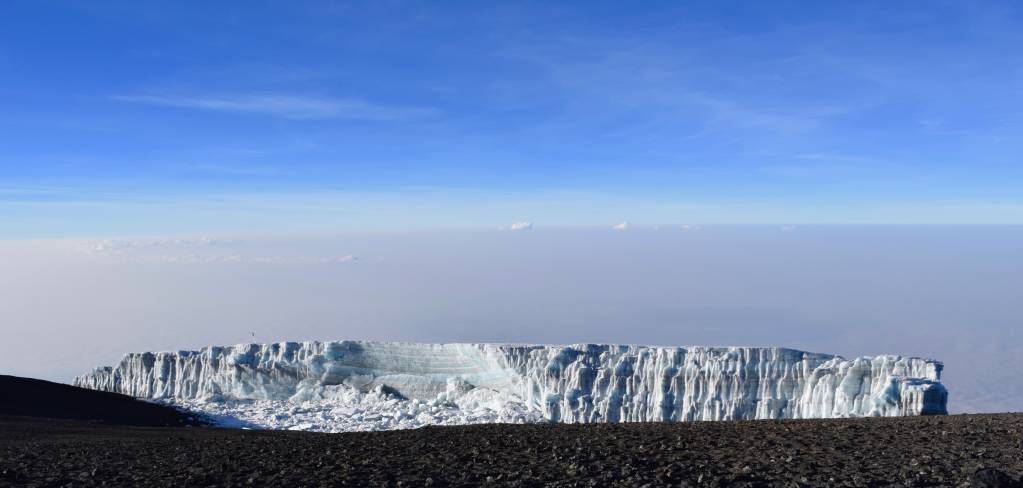 The frozen summit of Kilimanjaro
The frozen summit of Kilimanjaro
The summit push was a remarkably grim affair. A steep, meandering hike through freezing darkness, the dancing flicker of head torches above and behind; a mesmerizing distraction for my altitude addled brain.
The crescendo of excitement at beginning the final ascent quickly evaporated into six hours of willing one foot in front of the other, focusing only on the boots of the hiker ahead.
I stole a glimpse at my watch every hour or so, wolfed down the occasional chocolate bar, and meekly returned a smile of encouragement from an impressively untroubled guide (for whom the meaning of “almost there” must have got lost in translation), before steeling myself for one last push.
Stella Point
I arrived at Stella Point, on the rim of the great dormant crater, exhausted, elated and just in time to watch the sun majestically haul itself above the horizon. Pale blue African sky around us, Shira peak (another of the volcano’s three cones) bathed in an orange glow as it appeared floating in the distance, piercing the dense cloud forest thousands of feet below.
Uhuru Peak
Giddy with excitement (and perhaps altitude exposure), I pushed onwards to Uhuru Peak, the final summit and the roof of Africa.
The winding path around the crater rim passed me by in a haze of delirium, like a saunter home from the local pub, wrapped up warm on a winter’s evening, until finally, I’d done it. I’d reached the summit.
It was an incredible, emotional moment, as group and guides drunk with achievement and the sheer beauty of the surroundings gathered in embrace for a photograph beneath the famous sign. The brief minutes snatched at the top of the mountain were completely intoxicating, as if I was floating in another world.
I gazed at the intricately layered glaciers and ice cliffs, now cloaked in brilliant African sunshine, the plains below stretching out into the distance with the hint of the curvature of the Earth visible as the horizon touched the sky. Finally, I stood on the barren peak I had stared longingly upwards at for the previous week.
As the adrenaline rush of standing on the ceiling of the continent ebbed away, the realisation of total exhaustion kicked in. With the hot sun now beating down and loosening the slopes of scree, it was possible to slide, almost ski, across the surface back down to camp.
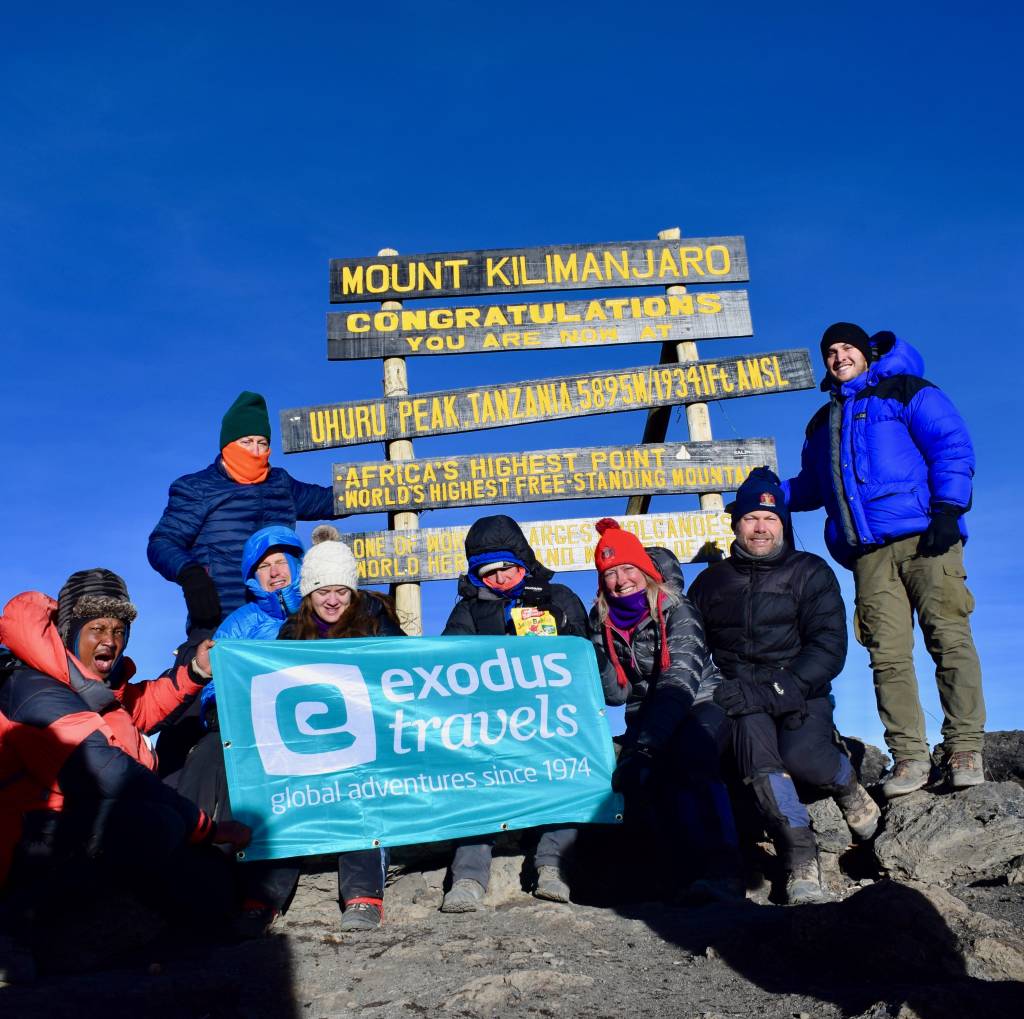 On the summit of Mount Kilimanjaro
On the summit of Mount Kilimanjaro
Even so, my weary legs kept collapsing beneath me and by the time I returned to camp I had barely had enough energy left to crawl into my sleeping bag for a few precious hours of rest, before continuing with the descent.
Despite the fatigue, our final night on the mountain was something of a celebration. The inexhaustible porters again provided the entertainment with their age-old songs of the mountain, now accompanied by considerably more contemporary dance moves.
All around, hikers were triumphantly drinking in the heavy fresh air, savouring the last views of the now-conquered summit, anticipating a return to civilisation and what would surely be the shower of a lifetime.
Discover our summit trips to Kilimanjaro below.
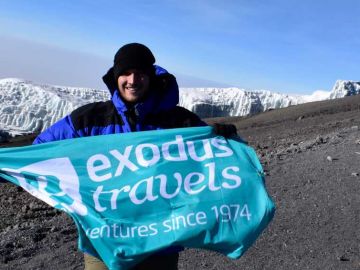
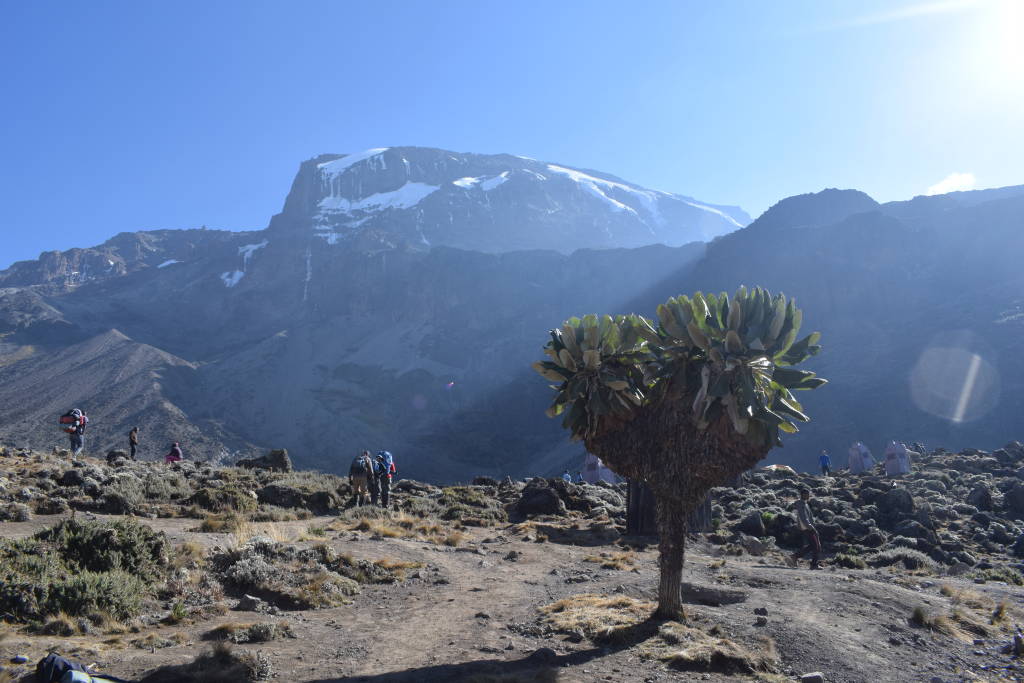 Trekking on Kilimanjaro
Trekking on Kilimanjaro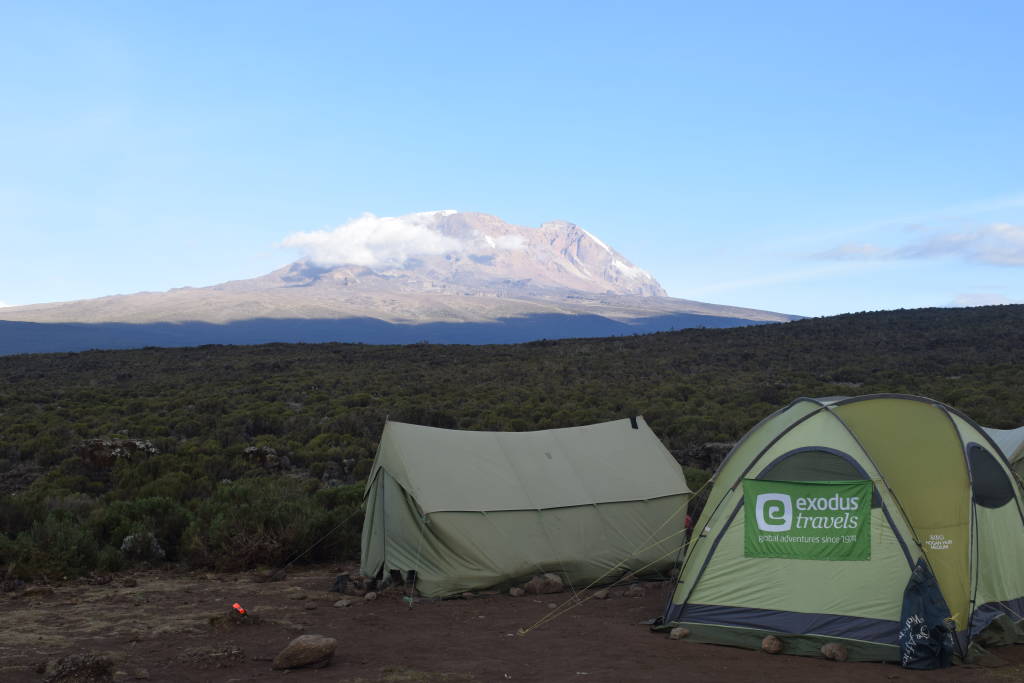
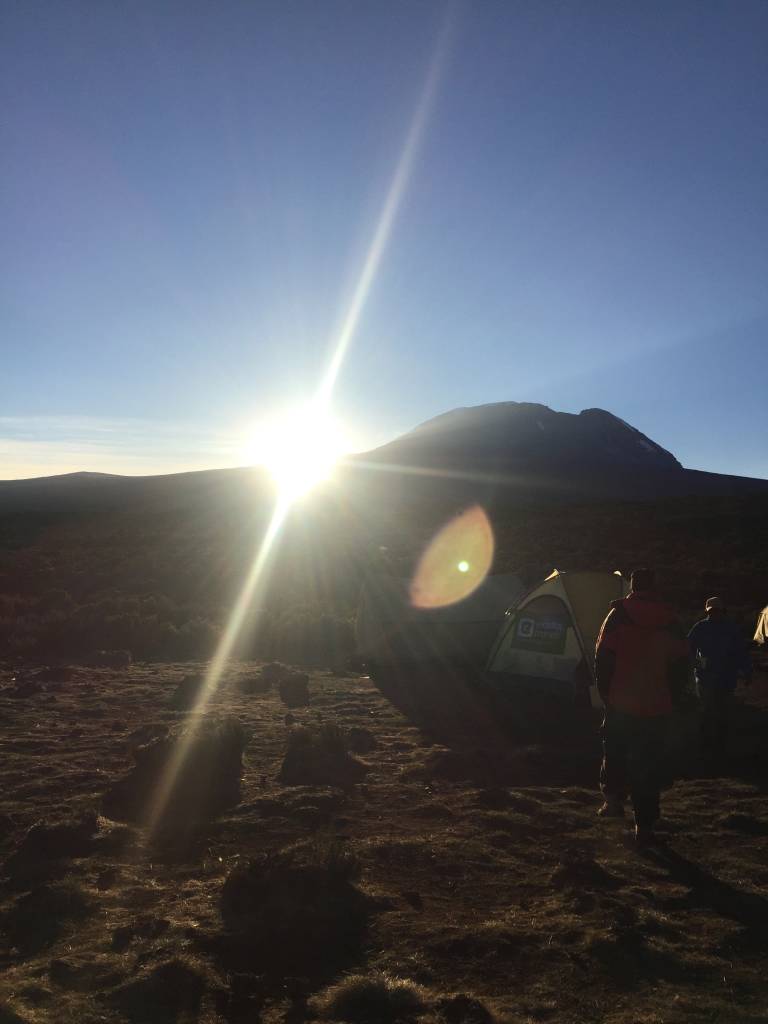 Reaching the summit
Reaching the summit
